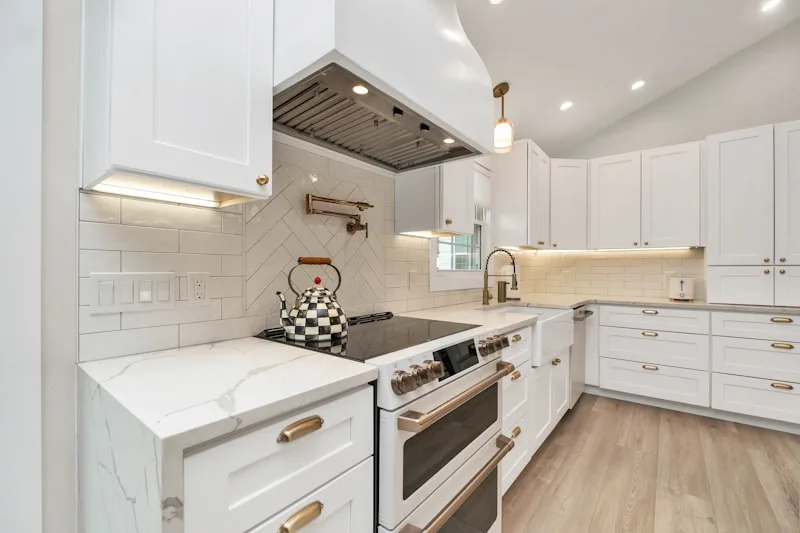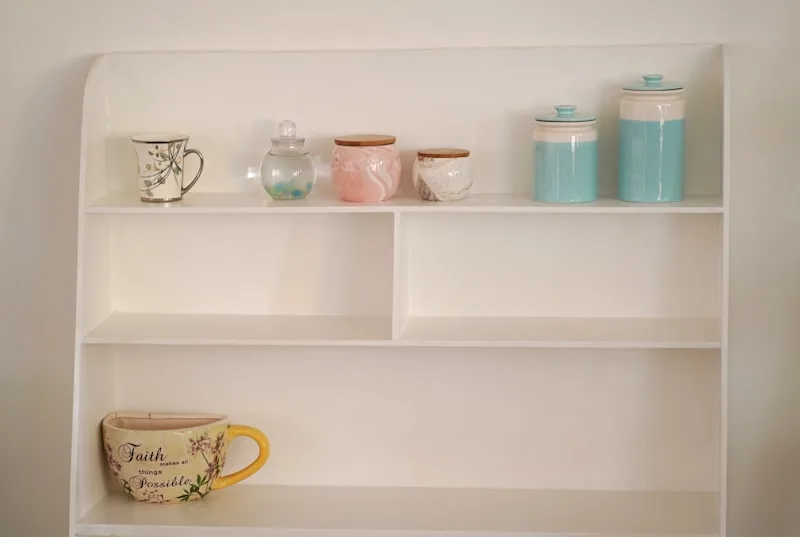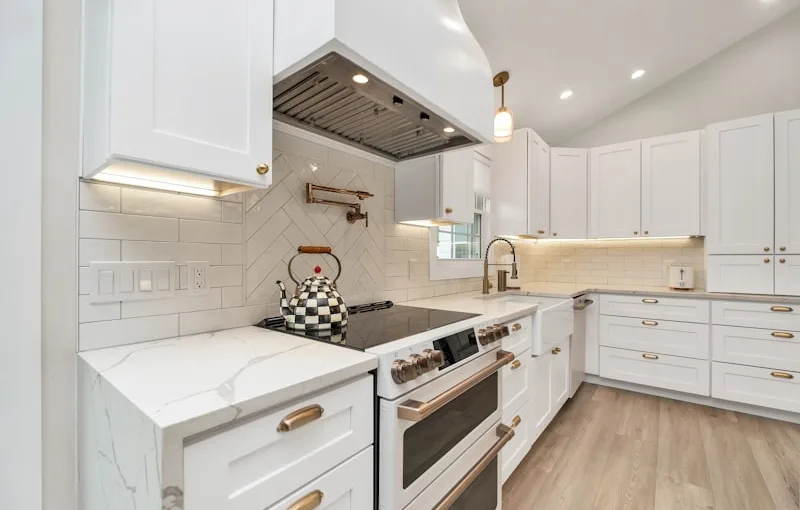Latex paint is like that friend who’s fun at parties but might not be the best for a long-term commitment. It’s easy to apply, dries quickly, and cleans up with soap and water—what’s not to love? However, when it comes to durability, especially in a kitchen where grease, moisture, and heat are constant companions, latex paint can struggle. Think of it as a sprinter in a marathon; it might start strong, but can it keep up the pace?

Over time, you might notice chipping, peeling, or fading, especially if your cabinets are exposed to a lot of sunlight or steam from cooking. It’s like putting a delicate flower in a storm; it just won’t thrive. If you’re set on using latex, consider a high-quality brand and don’t skip the primer. A solid primer is like a sturdy foundation for a house—it sets the stage for everything that follows.
So, if you’re dreaming of a fresh, vibrant kitchen, latex paint can be a great choice for a quick makeover. Just keep in mind that it may require some touch-ups down the line. After all, a little maintenance can go a long way in keeping your kitchen looking its best!
The Great Debate: Can Latex Paint Stand the Test of Time on Kitchen Cabinets?
First off, latex paint is like that reliable friend who always shows up to help you move. It’s water-based, which means it’s easy to clean up and has lower levels of volatile organic compounds (VOCs). This makes it a healthier option for your home, especially in a space where you whip up meals. But here’s the kicker: while it’s user-friendly, it might not be as durable as its oil-based counterpart. Think of it like a cozy sweater—great for a chilly day, but not ideal for a wild night out.

Now, if you’re planning to tackle a kitchen makeover, you’ll want to consider the wear and tear that cabinets endure. From greasy fingerprints to the occasional splatter, your cabinets face a lot. Latex paint can handle some of this, but it’s essential to prep the surface properly. Sanding and priming are like laying a solid foundation before building a house; they make all the difference in how long your paint job lasts.
And let’s not forget about the finish! A satin or semi-gloss finish can give your cabinets that extra oomph, making them more resistant to stains and easier to wipe down. It’s like putting on a protective layer of armor—who wouldn’t want that for their kitchen?
So, can latex paint stand the test of time on kitchen cabinets? With the right prep and finish, it just might surprise you!
Kitchen Cabinet Makeover: Is Latex Paint a Durable Choice?
Latex paint is like the superhero of the paint world. It’s water-based, which means it’s easy to clean up and has low levels of volatile organic compounds (VOCs). This is a big win for your health and the environment! Imagine transforming your cabinets without the worry of harsh chemicals lingering in the air. Plus, it dries quickly, so you won’t be waiting around forever to see your beautiful new finish.
Now, durability is key when it comes to kitchen cabinets. After all, they’re constantly exposed to spills, heat, and the occasional bump from a rogue pot. The good news? High-quality latex paint can hold its own against these kitchen challenges. It’s flexible, which means it can expand and contract with temperature changes without cracking. Think of it as a yoga instructor for your cabinets—stretching and bending but never breaking!
However, not all latex paints are created equal. You’ll want to opt for a paint specifically designed for cabinetry or trim. These formulations often include additives that enhance durability and resistance to scratches and stains. It’s like choosing a sturdy pair of shoes for a long hike instead of flip-flops!
Longevity of Latex: How Well Does It Perform on Kitchen Cabinets?
First off, latex paint is like that reliable friend who always shows up when you need them. It’s water-based, which means it’s easy to clean up and has lower levels of volatile organic compounds (VOCs). This is a big win for your health and the environment! Plus, it dries quickly, so you won’t be waiting around forever to get your kitchen back in action.
Now, let’s talk about longevity. Latex paint is known for its flexibility, which means it can expand and contract with temperature changes without cracking. Think of it as a stretchy pair of pants that can handle a big meal! However, it’s important to note that while latex is tough, it’s not invincible. In high-traffic areas, you might notice some wear and tear over time. But don’t fret! A good topcoat can add an extra layer of protection, making your cabinets look fresh for years to come.
Another thing to consider is the finish. A satin or semi-gloss finish not only looks sleek but also makes cleaning a breeze. Spills and splatters? No problem! Just a quick wipe, and you’re good to go.
So, if you’re contemplating a kitchen makeover, latex paint could be your best buddy. It’s versatile, easy to work with, and can give your cabinets a fresh, modern look that stands the test of time. Who wouldn’t want that?
From Drab to Fab: Will Latex Paint Last on Your Kitchen Cabinets?
Latex paint is like that friend who’s always up for a good time—easy to work with and quick to dry. Unlike oil-based paints, which can be a bit of a hassle, latex paint is water-based, making cleanup a breeze. Just soap and water, and you’re done! But don’t let its easy-going nature fool you; it can pack a punch when it comes to durability.
Now, you might be wondering, “How does it hold up in a busy kitchen?” Well, think of your cabinets as the unsung heroes of your culinary adventures. They endure spills, splatters, and the occasional greasy fingerprint. The good news? When applied correctly, latex paint can withstand the daily grind. Just make sure to prep your cabinets properly—clean, sand, and prime them first. It’s like giving your cabinets a spa day before the big reveal!
Another thing to consider is the finish. A satin or semi-gloss finish not only looks sleek but also offers extra protection against wear and tear. It’s like putting on a stylish yet sturdy pair of shoes; you want something that looks good but can handle a little action.
So, if you’re ready to take the plunge, remember that with the right prep and finish, latex paint can indeed last on your kitchen cabinets. It’s all about that perfect blend of style and substance!
Kitchen Cabinet Revamp: Experts Weigh In on the Durability of Latex Paint
First off, latex paint is like that reliable friend who always shows up when you need them. It’s water-based, which means it’s easy to clean up and has lower levels of harmful fumes compared to oil-based paints. Imagine painting your cabinets without feeling like you’re suffocating in a cloud of toxic chemicals! Plus, it dries quickly, so you won’t be waiting around forever to put your kitchen back together.
Now, durability is key, especially in a kitchen where spills and splatters are part of the daily routine. Experts agree that when applied correctly, latex paint can hold its own against the wear and tear of everyday life. Think of it as a sturdy shield protecting your cabinets from the chaos of cooking. With a good primer and a couple of quality topcoats, you can achieve a finish that not only looks fabulous but also stands up to moisture and heat.
But here’s the kicker: not all latex paints are created equal. Some are specifically formulated for cabinetry, offering a tougher finish that resists chipping and scratching. It’s like choosing between a regular umbrella and a wind-resistant one—one will keep you dry, but the other will stand strong against the storm. So, when you’re on the hunt for the perfect paint, look for those labeled as “cabinet-grade” or “high-durability.”
In the end, if you’re ready to transform your kitchen, latex paint could be your best buddy in this revamp journey. Just remember to do your homework, and you’ll be well on your way to a stunning, long-lasting finish!
Frequently Asked Questions
How Durable is Latex Paint on Kitchen Cabinets?
Latex paint is a popular choice for kitchen cabinets due to its durability and ease of application. When properly applied and cured, it can withstand moisture, heat, and daily wear, making it suitable for high-traffic areas. However, for optimal durability, it’s recommended to use a high-quality latex paint specifically designed for cabinetry and to apply a protective topcoat.
Will Latex Paint Chip or Peel on Cabinets?
Latex paint can chip or peel on cabinets if not properly applied or if the surface is not adequately prepared. To ensure durability, it’s essential to clean, sand, and prime the cabinets before painting. Additionally, using a high-quality latex paint and applying a protective topcoat can help minimize the risk of chipping and peeling.
How to Maintain Latex Painted Kitchen Cabinets?
To keep latex painted kitchen cabinets looking fresh, regularly clean them with a mild soap solution and a soft cloth to remove grease and dirt. Avoid abrasive cleaners that can damage the finish. For scuff marks, gently rub with a damp sponge. Ensure proper ventilation to prevent moisture buildup, and consider applying a clear topcoat every few years to enhance durability and shine.
What Finish Should I Use for Latex Painted Cabinets?
When selecting a finish for latex painted cabinets, consider using a water-based polyurethane or a satin finish for durability and ease of cleaning. These options provide a protective layer while enhancing the color and sheen of the paint. Ensure proper curing time and follow application instructions for the best results.
How to Prepare Cabinets for Latex Paint?
To prepare cabinets for latex paint, start by removing all hardware and cleaning the surfaces with a degreaser. Sand the cabinets lightly to create a smooth surface and improve paint adhesion. Fill any holes or imperfections with wood filler, then sand again once dry. Wipe down the cabinets with a damp cloth to remove dust, and apply a primer suitable for latex paint. Allow the primer to dry completely before applying the latex paint for a durable finish.
